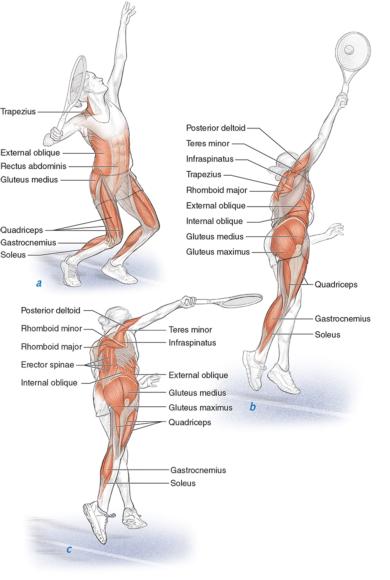The anatomy of a successful serve
This is an excerpt from Tennis Anatomy-2nd Edition by E Paul Roetert,Mark Kovacs.
Serves and Overheads
The serve is one of the most important shots in tennis. Each player starts half the points with a serve, for which he has time to prepare. The serve has become a true weapon in the game because it can dictate much of what happens in the ensuing point. Since the swing pattern of the overhead is quite similar to that of the serve, we are including it in this section as well.
From a strategy and tactics perspective, the main keys to a successful serve are pace, spin, and placement. The best servers combine all three components. Of course, physical preparation to develop strength, power, flexibility, and coordination determines the quality of these three components.
A good serve has gained in importance over the past few decades because of equipment improvements as well as training techniques in professional tennis. Statistics from the U.S. Open Tennis Championships show that for both the men's and women's events, many of the top-ranked players also have the highest service speeds. You also can make the serve a true weapon by preparing your body for the rigors of serving at a high level for an entire match.
In the modern game, we see two types of serves: the foot-up serve (figure 1.9) and the foot-back serve (figure 1.10). Either serve is acceptable. Typically, the player chooses which serve to use based on personal preference and style. In the foot-up serve, the rear foot typically starts in the same position as for the foot-back serve. However, during the toss and backswing, the back foot slides up to join the front foot. This allows for more forward weight transfer as well as the ability to open up the hips easier during the forward swing. The foot-back position allows for a slightly more balanced position and possibly more upward (vertical) force production.

Figure 1.9 Foot-up serve: (a) loading; (b) acceleration; (c) follow-through.

Figure 1.10 Foot-back serve: (a) loading; (b) acceleration; (c) follow-through.
The execution of the serve or overhead has three major phases: loading, acceleration, and follow-through. During the loading (or preparation) phase, you are storing energy. The acceleration phase is when you release the energy through the end of ball contact. The last phase, the follow-through (or deceleration) phase, requires great eccentric strength to help control the deceleration of the upper and lower body.
SHOP

Get the latest insights with regular newsletters, plus periodic product information and special insider offers.
JOIN NOW


